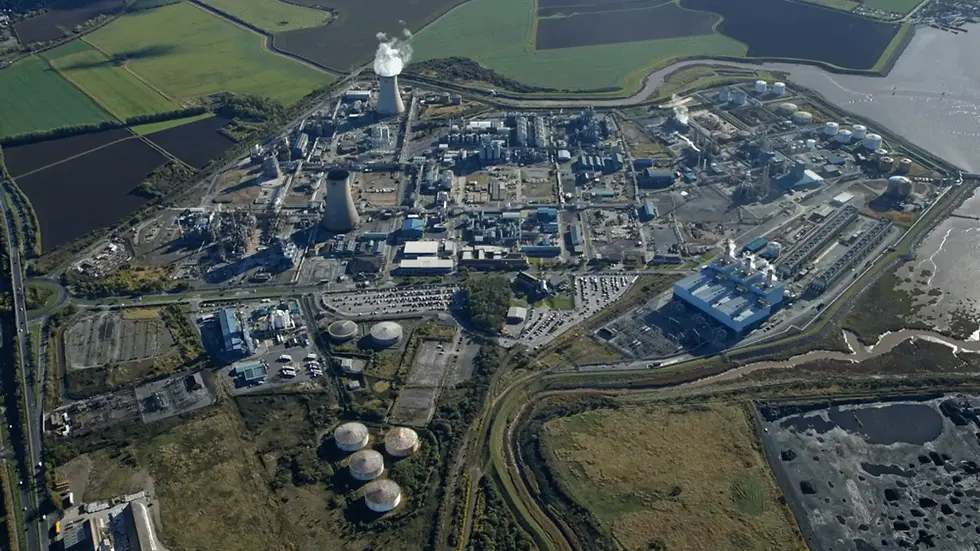As the UK Builds Greener Industry, Water Shortages Loom Large
- Hanaa Siddiqi
- Jul 31
- 3 min read

Water availability is emerging as a significant obstacle to the UK’s low-carbon ambitions, particularly in key industrial zones such as the Humber Estuary and the area surrounding the HyNet cluster near the England-Wales border. That is the conclusion of a new assessment by the Environment Agency, which examined the potential environmental impacts of three major industrial cluster projects —Humber, Teesside, and HyNet —that form the backbone of the country’s decarbonization strategy.
The agency’s review focused not only on immediate environmental concerns but also on the long-term resilience of these projects. This included evaluating the adequacy of local water infrastructure and how well it can handle growing demands under more extreme and unpredictable weather conditions.
According to the Environment Agency, poor coordination and years of underinvestment in water systems have created bottlenecks in regions that are otherwise well-suited for industrial transformation. This lack of readiness could jeopardise the rollout of water-intensive infrastructure such as nuclear plants and green hydrogen production facilities that rely on electrolysers. While seawater desalination is theoretically an option, the agency warned that these systems are costly and slow to implement at the scale required.
Water scarcity is already looming over Teesside and HyNet, with concerns about both groundwater and surface water availability in the years ahead. Even if these issues do not directly derail cluster projects, they could restrict the expansion of surrounding infrastructure, such as housing developments or other industrial operations.
Climate change is only adding fuel to the fire. The Climate Change Committee projects that by the 2050s, UK winters will be roughly one degree warmer and five per cent wetter compared to the 2010s. Summers, however, are expected to swing in the opposite direction, with forty-degree heatwaves becoming the norm. These shifts are expected to bring more frequent droughts and floods, both of which could pose a threat to critical infrastructure.
Some of these trends are already playing out. In 2022, the UK experienced its driest July since 1935, resulting in a severe drought classification. Just one year later, four English regions remain in drought conditions this July.
To prevent water availability from becoming a deal-breaker for industrial decarbonisation, the Environment Agency is urging tighter coordination among water companies, project developers, regulators, and planning authorities. The agency acknowledged that some water utilities are beginning to adopt more forward-looking strategies that account for both rising water demand and the risks associated with climate change.
But there are signs of friction. In certain regions, utilities are imposing blanket bans on new projects that exceed preset water usage thresholds. The Environment Agency believes this approach lacks nuance and is calling for deeper dialogue between utilities and developers to find workable solutions.
Local authorities also play a role. The report states: “In the short term, temporary solutions for water abstraction are needed to ensure immediate project viability. For long-term resilience, strategic water supply assessments, improved coordination between industry, government, and utilities, and integration of water resource planning into local and national development strategies are essential.”
Teesside in particular was singled out for needing more accurate and transparent estimates of future water consumption. The agency noted that planning frameworks already exist to support this type of strategic foresight, such as Water Resource Management Plans and Water Cycle Studies. However, these tools are often overlooked or underused when it comes to planning industrial and infrastructure investments. The situation is exacerbated by inadequate data sharing among stakeholders.
Looking ahead, the UK Government is preparing to release a national spatial strategy that will outline how the country intends to balance land use across competing needs, such as clean energy production, housing, and agriculture. The Environment Agency strongly recommends that this plan prioritise water availability at the centre of decision-making.
Earlier this year, the government also unveiled its 10-Year Industrial Strategy, which includes a three-year delivery plan to accelerate progress. Among the headline pledges were lower electricity costs for energy-intensive industries and an additional £2.6 billion earmarked for regional funding initiatives, with industrial clusters positioned as a top priority. Still, without a reliable water supply, even the most ambitious strategies may struggle to gain traction.





![LOGOTYPE [GREEN_DARK GREEN].png](https://static.wixstatic.com/media/d6e0b6_7c15be730f2c42d4ad22da5f1e69fa35~mv2.png/v1/fill/w_877,h_198,al_c,q_85,usm_0.66_1.00_0.01,enc_avif,quality_auto/LOGOTYPE%20%5BGREEN_DARK%20GREEN%5D.png)



Comments